
Home
Pilot
Escape
303 Squadron 1
303 Squadron 2
A New Home
and Finally
Links
Contents
| | A Pilot in
Training...
|
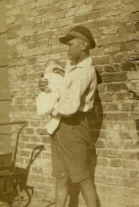
Mirek
and a cousin, Torun 1933 |
Still
living in Torun, Mirek was anxious to join up as soon as possible. He had
originally wanted to start aged 16, but was persuaded to wait until he was
17. He
was finally to join the SPLdM [Szkoły Podoficerów Lotnictwa dla Małoletnichin]
in 1934 as an apprentice mechanic before transferring to air
training college in 1935 at age 18, to become a pilot.
His
first experiences in the air would be on the RWD8 trainer, a monoplane in
service with most schools. |
| The RWD8, although an
open cockpit aircraft, was an overwing monoplane aircraft,
considered quite advanced for initial air training. |

RW8
Trainer |
|
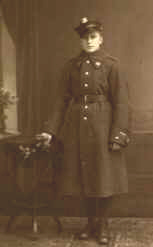
Pilot
Cadet 1936
|
| Parachute
training was was perhaps less advanced. Young pilots donned
'chutes, crawled out onto the wing of the giant aircraft seen
below and simply slid off into the void below. |
|
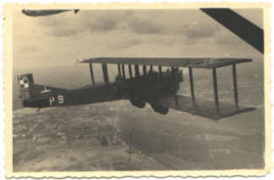
Parachute
Training 1936 |
|
|
| He would also learn on the
advanced biplane trainer, the PWS26.By early 1937 he had completed his
basic courses and was posted to the 4th Air Regiment based near his home
in Torun. |
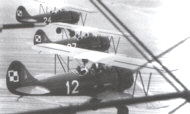
PWS26
Advanced Trainer |
He was to transfer to the famous Fighter
Pilot School at Deblin. There he was to meet and make friends;
these were men who were to have such a remarkable impact three
years later over the skies of London and South East England.
|

Deblin,
1938
|
The Commander of
the Deblin school, more properly known as the Aviation
Cadet-Officer School - Combat Group with a total of nine
training squadrons, was Witold Urbanowicz. Among those qualifying with Mirek was
Jan
Rogowski. Both these men would serve together again, although they
would not have predicted where or when in 1938. Deblin was undoubtedly
the finest Polish fighter training school of its day. Although the
Polish Air Force was not equipped with modern combat aircraft, it
was run on modern tactical lines and the training pilots received
was of the highest order. Even in Army dominated Poland, the Air
Force officer was regarded as quite a dashing hero. |
|
|
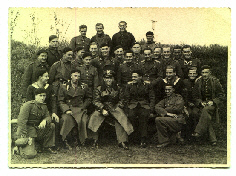
Graduation
Day, Deblin, 1938 |
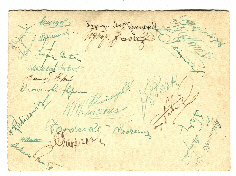
Graduation
Day, Deblin, 1938 |
To War...
|
In
October 1938, Mirek was posted back to the 4th Air Regiment at Torun.
Whilst tensions built in Austria and Czechoslovakia, Poland prepared for
war. Squadrons were being brought into the front line rapidly, but the
calibre of the pilots was all too frequently higher than that of the
aircraft. Of his fellow pilots in the 142 Squadron, one was Stanilsaw
Skalski, better known later on in the war as the leader of "Skalski's
Circus". But there was still time for some enjoyment and Mirek spent leaves
either at the house in Zoppot or visiting his two eldest sisters in
Warsaw.
|
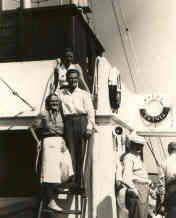
At
Gdynia, 1939
|
|
Poland
was prepared to fight only a limited war on one front. Built in to
Pilsudski's original plans, carried forward by Sikorski, were diplomatic
triggers. Should Poland be attacked on its Western borders with Germany,
then France would attack Germany along an Eastern front. This was flawed
in two respects. Firstly, guarantees given by France (and later England)
took no account of their unpreparedness for war. Secondly, very few people
even guessed at the secret protocols of the Nazi / Soviet non aggression
pact.
|
|
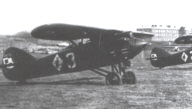
PWS10
of the 4th Air Regiment
|
Mirek
gained more experience on further aircraft; the PWS10, the P7 and P11c
fighters, during 1938 and 1939.
|
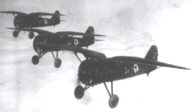
P7
1938
|
|

P11c
|
He
was at Torun with the 4th Air Regiment when the German forces overran the border defences on 1st
September 1939. He visited his mother and younger sister Marisia on that
very day; his goodbyes were hurried and he never saw them again.
|
|
|
When the
Red Army followed into Poland two weeks later, the fate of Poland was
sealed. Whilst post war analysis of the defence of Poland highlights many
failings, it still remains that poorly equipped divisions on the ground
and out gunned squadrons in the air held off the might of Germany for
nearly six weeks; the campaign would last longer and would cost the
Germans more in dead and wounded that the push West against the combined
armies of Belgium, Holland, Luxembourg, France and England the following
year.
At
the end of September 1939, Polish Air Force commanders gave instructions
for the 'last stand'. Knowing that the country, for the time being, was
lost. One third of Mirek's squadron was ordered to fly remaining
serviceable aircraft to Hungary or Rumania. One third would leave the
country on foot, to try and reform in France. The last third would remain
and fight to defend the civilian population to the bitter end.
There was considerable competition for
places in the rear guard. Within the 4th Air Regiment, commanders ordered
that lots be drawn to decide which men went and which stayed. It was
claimed that young men of fortune were offering their estates, houses,
everything they had, in exchange for the lot of a man who was staying. Not
surprisingly, once lots were cast, men did as they were ordered. At the
beginning of October, Mirek made his way south to Rumania. |
|
